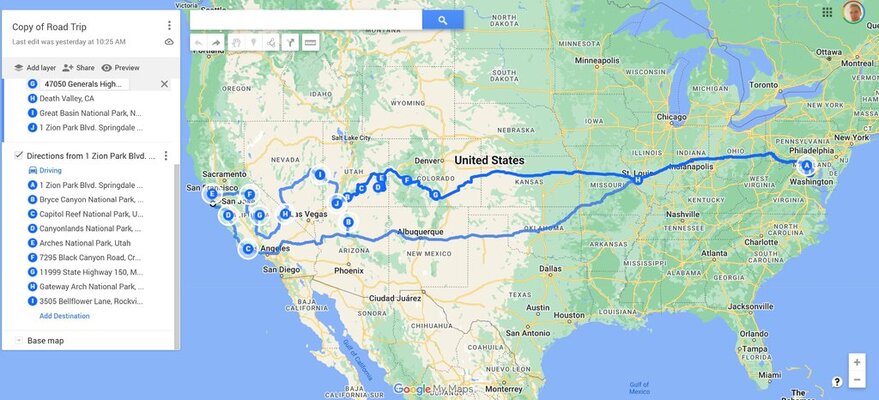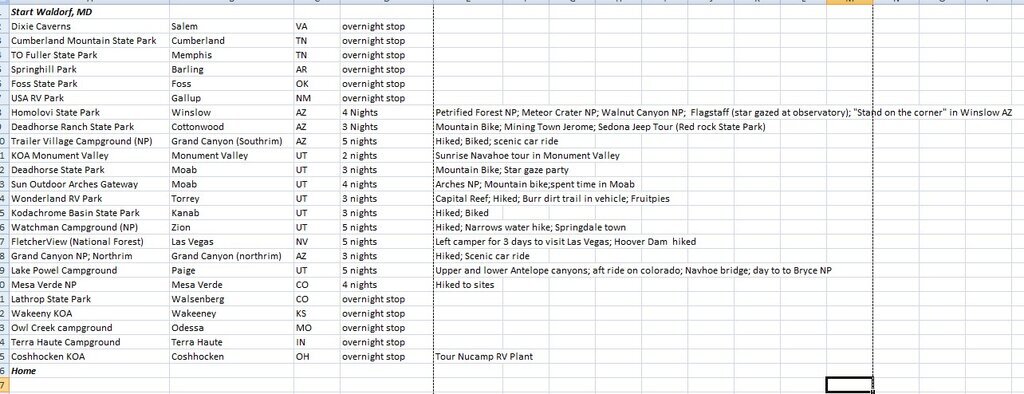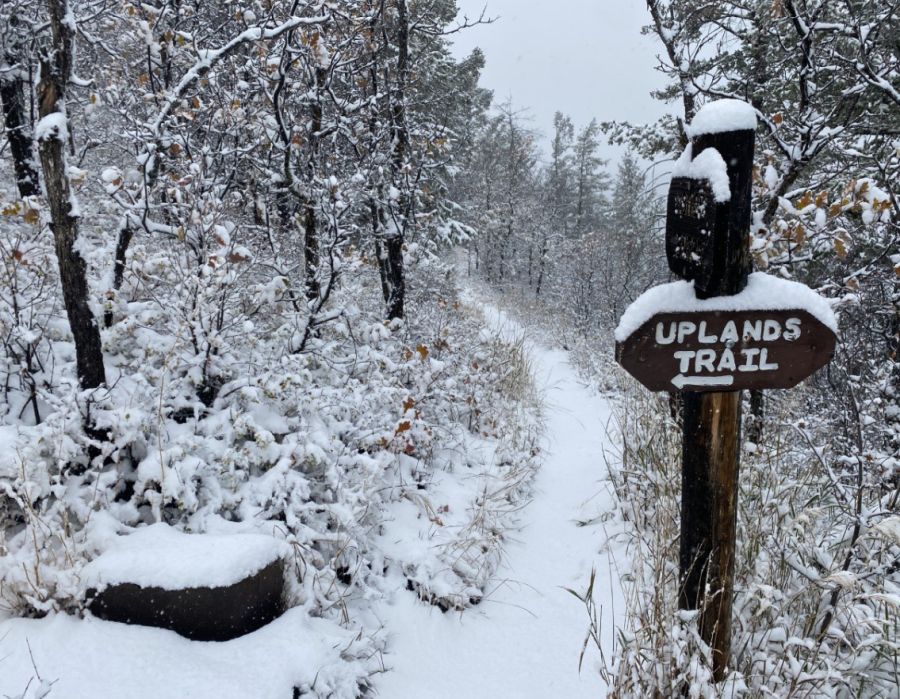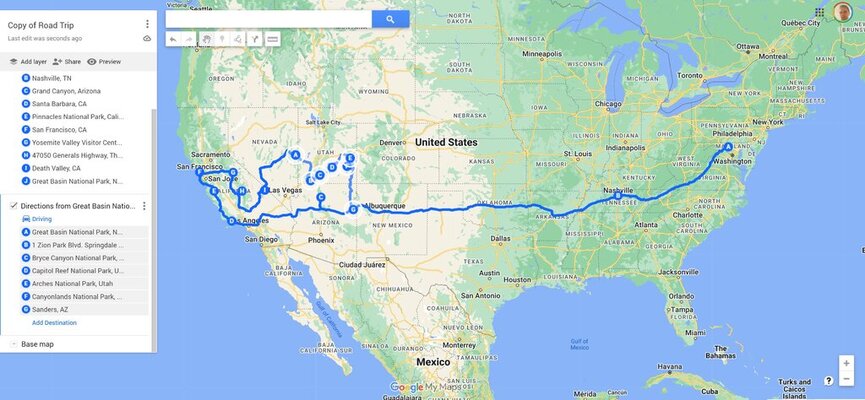chaostactics
Well-known member
I'm planning on leaving the first week or two in Feb. I'm trying to hit as many national parks as I can. I'm towing a GD 2150RB. I will have a 3000 Ah with solar charging, the truck has a 7.2 KW power station built in and I will also be carrying a gas/propane genset.
26', GVW 6695 maybe less. RV is a 4-season unit, with a heated and insulated underbelly.
TV is a 2022 F150 Powerboost with 12.5k lbs towing capacity.
I can the northern route either first or second, makes no difference to me. Planning on making the drive over a month and a half to two months. Staying in a mix of campgrounds, legal retail lots, truck/rest stops, harvest hosts, boondockers welcome.
26', GVW 6695 maybe less. RV is a 4-season unit, with a heated and insulated underbelly.
TV is a 2022 F150 Powerboost with 12.5k lbs towing capacity.
I can the northern route either first or second, makes no difference to me. Planning on making the drive over a month and a half to two months. Staying in a mix of campgrounds, legal retail lots, truck/rest stops, harvest hosts, boondockers welcome.






